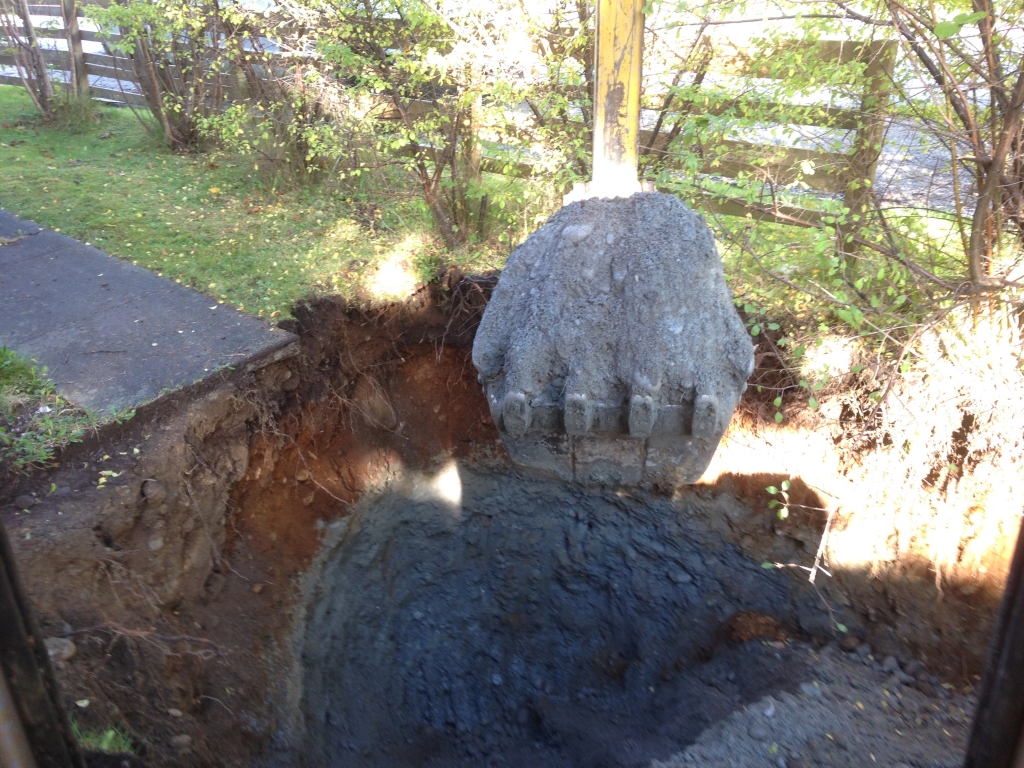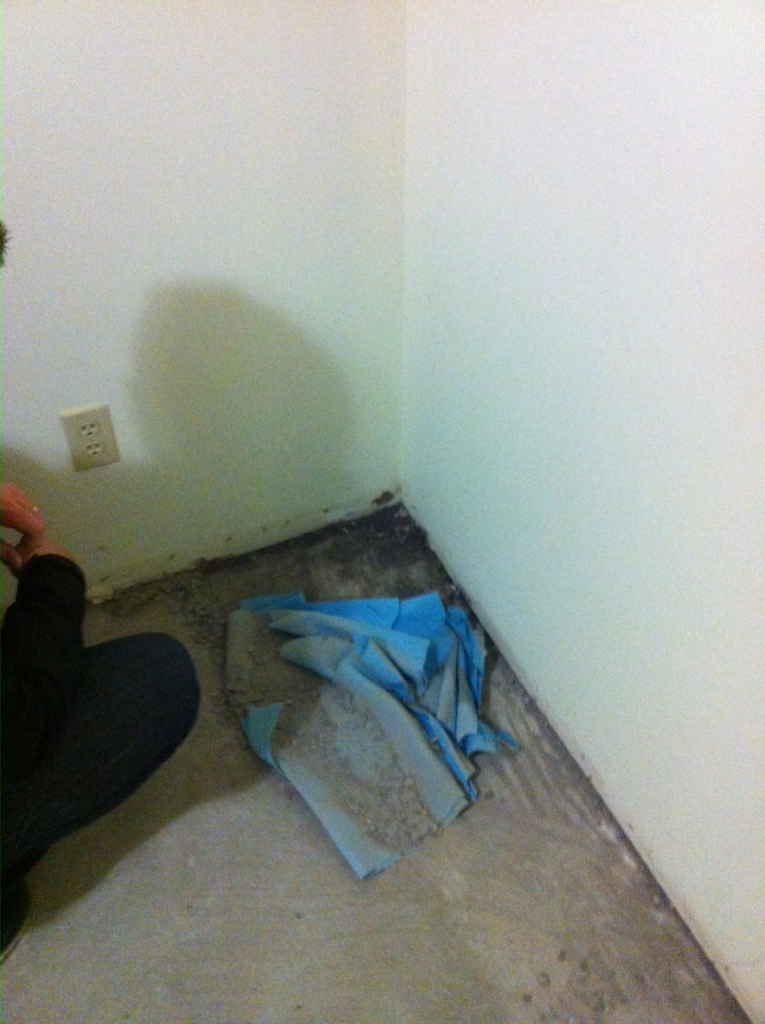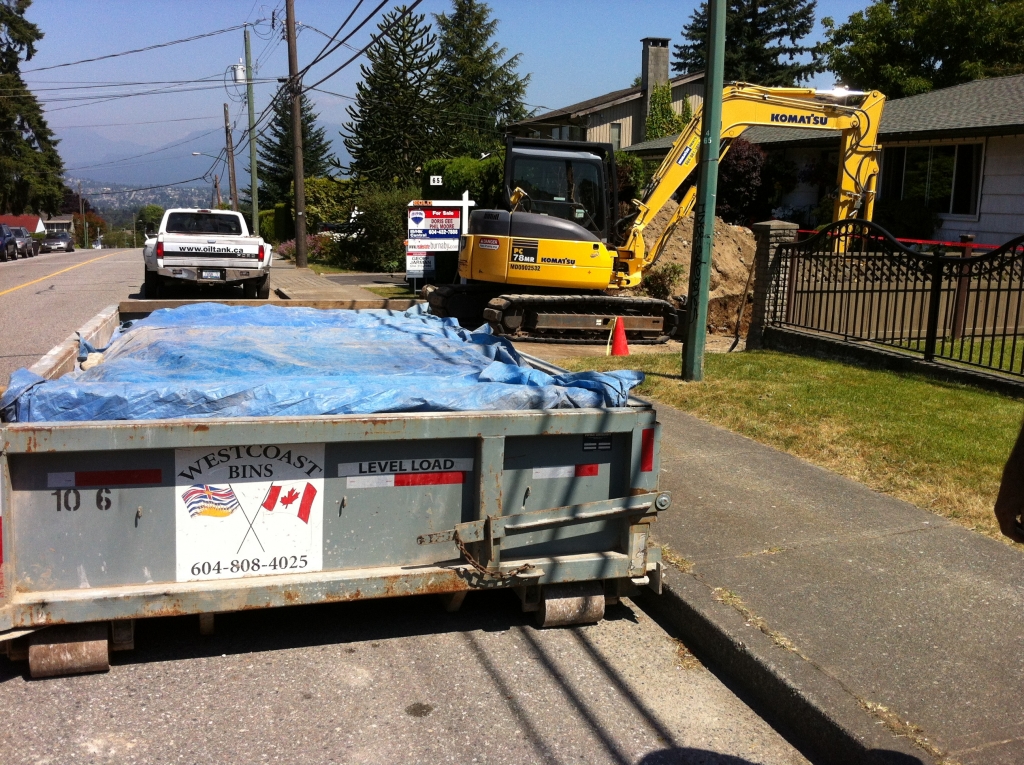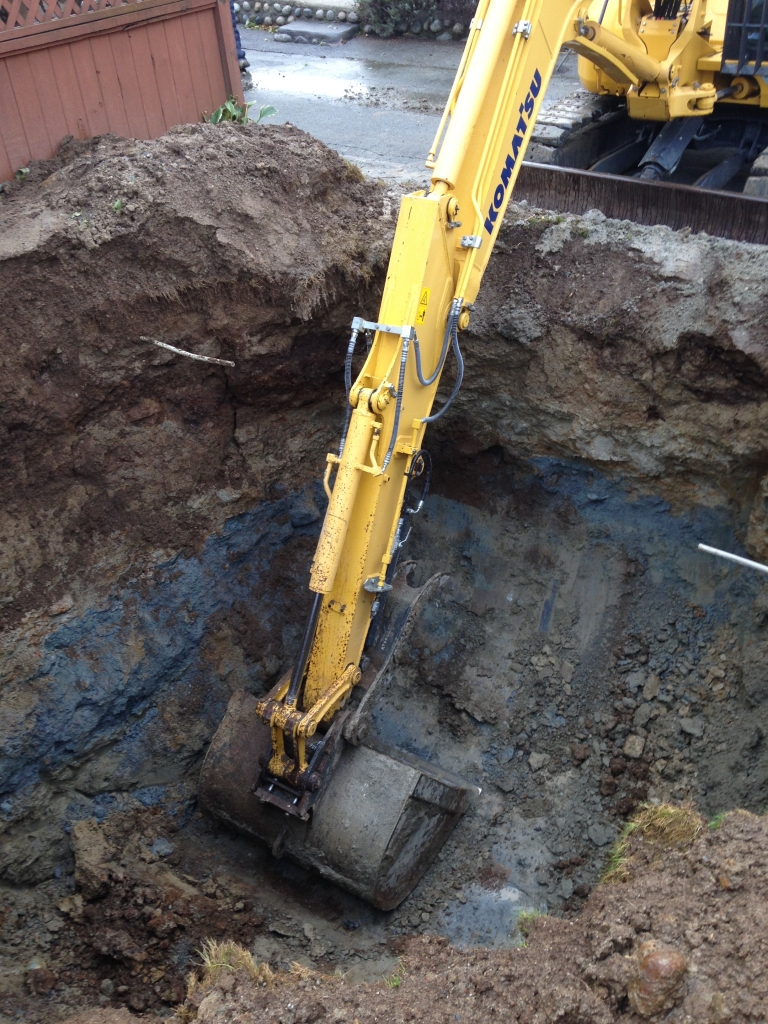What is Contamination?
When involving storage tanks, contamination can be described as the introduction and/or presence of an undesired foreign substance into the environment. According to the definition adopted by the government of Canada, a contaminated site is “one at which substances occur at concentrations above background (normally occurring) levels and pose or are likely to pose an immediate or long term hazard to human health or the environment, or exceeding levels specified in policies and regulations.”
For examples, please visit our gallery and check out our pictures of contamination.

Why is it Important to Clean the Contamination?
There are many reasons to remediate your property:
- To keep the environment clean, and free from pollutants introduced into the ecosystem.
- To remove the potential of legal liabilities pertaining to the cross migration of contamination to your neighboring and/or city property.
- To remove the risk of pollutant exposure to your family and pets.
- To stop the chance of consuming hydro carbons, if your property is supplied by well water.
- To adhere to your local cities and/or the Ministry of Environmental guidelines.
- To make your property more marketable when selling your house in the future.
- To renew your insurance, or mortgage (dependent on their internal policies).
For examples of contaminated properties, please visit our gallery and check out some pictures of Remediation.
Can You Tell if Contamination is Present Before the Tank is Removed?

Unfortunately, it is difficult to assess if contamination is on the property before a tank is removed, and if an oil tank company tells you it is, be very cautious of there intentions.
There are some extreme cases where a couple indications may suggest that contamination may be present on your property before removing your oil tank, such as:
- Oil ingress into the basement through the foundation (odour and/or evidence of seepage through the foundation or flooring.
- Oil found in your sump
- Oil found in your septic tank
- Oil odor in you yard during heavy rain periods
- Oil found in your drainage lines
On Average, How Much Contamination Needs to Be Removed From a Property?
Again, these situations are uncommon and it is never truly certain that your property is contaminated until samples are submitted and analyzed. Theoretically, it is possible to drill throughout your property and take core samples or install monitoring wells; however, for a residential property this is a very costly process and is not always completely accurate. The most accurate and cost effective way to determine if there is an environmental issue on your property is to remove the oil tank and sample the excavation.
For examples of contaminated properties, please visit our gallery and check out some pictures of Remediation.
Every property is unique and should be assessed on an individual bases, since there are so many factors that contribute to the presence and spread of contamination:
- When did the tank start to leak?
- How much oil was in the tank?
- Is the yard slopped?
- Does your property have a high water table?
- What types of native tills surround your tank?

Keeping in mind all of the above variables, we find that on average most properties clean up within 1-4 bins, which equates to approximately 10 – 40 tonnes. Some properties may clean up in less than a bin, and in some extreme cases the total may go over 5 bins. Throughout the process our clients have control of how many bins go out each day and are kept fully updated throughout the process so that the project does not get out of control.
For examples of contaminated properties, please visit our gallery and check out some pictures of Remediation.
Who is Responsible for Cleaning Up the Contamination?
Please note that this following topic is meant as an informational source only and should not be used or understood as legal advice. We are not lawyers by any means and always suggest seeking legal advice when necessary.
In our experience, we find that the current owner of the house usually takes on the onus of the tank removal but if contamination is found, they may decide at that point if they are going to contact the previous owner of the house and/or seek a lawyer’s advice to get reparations. Many of our clients will remove their oil tank without any environmental issues and if no contamination is found, they do not usually seek legal advise.
Every scenario is different and if you feel that you would like to pursue legal action or contact previous owner; it would be at your discretion on how you would like to approach the situation. If you know that you are going to pursue legal action from the beginning of the job, it is advisable to make all contractors aware beforehand.
On the Ministry of Environments Fact sheet 32 “ on contaminated sites “ sheet version 5.0 August 2010, it states:
“Under the Act, the following individuals may be responsible for cleaning up a contaminated site:
- A current owner or operator of the site;
- A previous owner or operator of the site; and
- A producer or transporter of a substance that caused the contamination.”
“One or more of the above individuals may also be responsible for clean up if an adjacent site becomes contaminated by a substance migrating from the original site”.
The Ministry of Environments Fact sheet 32 also states:
“There are, however, a number of exemptions. For more information on remediation liability, see fact sheets 16 “Remediation Liability Overview” and Fact sheet 18 “ Remediation Liability and Transportation”. Please contact a lawyer with contaminated sites legal experience for further information on remediation liability.”
Again, to assess your liabilities it is important that you contact a lawyer with contaminated sites legal experience to evaluate your situation on a case-by-case basis.
For examples of contaminated properties, please visit our gallery and check out some pictures of Remediation.
What if the Contamination Goes Onto the Neighboring Property?
Please note that this following topic is meant as an informational source only and should not be used or understood as legal advice. We are not lawyers by any means and always suggest seeking legal advice when necessary.
If your oil tank has contaminated a neighboring property (cross migration), it is usually the responsibility of the owner of the source of the contamination to clean it up. However, every situation is different and needs to be addressed on an individual basis. If the contamination has migrated to city property, each city has its own by-laws regulating cross migration issues. We strongly advise that if you have concerns regarding liability to contact your respective city, environmental consultant, and/or Tri City Tank Tech, to help determine your options

On the Ministry of Environments Fact sheet 32 “ on contaminated sites “ sheet version 5.0 August 2010, it states:
“Under the Act, the following individuals may be responsible for cleaning up a contaminated site:
- A current owner or operator of the site;
- A previous owner or operator of the site; and
- A producer or transporter of a substance that caused the contamination”.
** “ One or more of the above individuals may also be responsible for the clean up if an adjacent site becomes contaminated by a substance migrating from the original site”. **
On the Ministry of Environments Fact sheet 34 – Requirements for Responding to Contaminant Migration. Version 3.2 September 2012, states:
“The “polluter pays” principle is a key part of the Act, which empowers whoever incurred a cost in cleaning up a site (including a responsible person) to seek compensation from one or more other responsible persons in court. Under the Regulation, a responsible person or persons) named as a defendant in a previous court action may also seek compensation from other responsible persons. See Fact Sheet 16, “Remediation Liability Overview” for details.”
It also notes:
“The Act provides an exemption from remediation liability by exempting as a responsible person a “person who owns or operates a contaminated site hat was contaminated only by the migration of a substance from other real property not owned or operated by the person.”
Again, to assess your liabilities it is important that you contact a lawyer with contaminated sites legal experience to evaluate your situation on a case-by-case basis.
For examples of contaminated properties, please visit our gallery and check out some pictures of Remediation.
